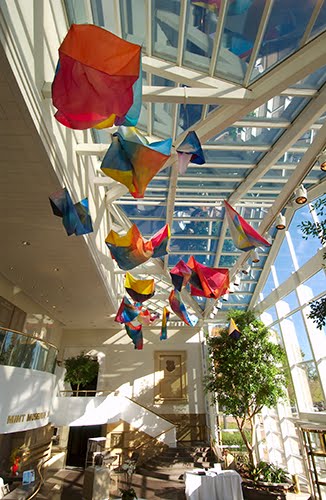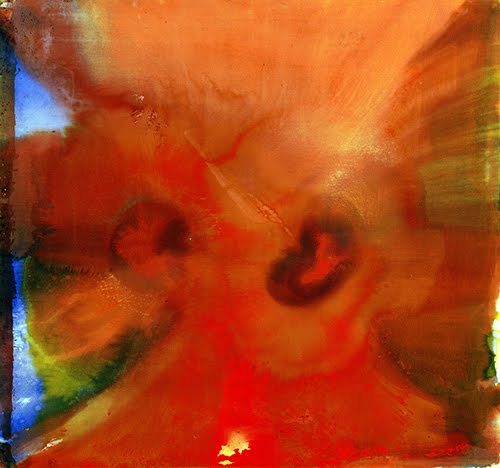African American History Month: Sam Gilliam
Whenever you’ve got a massive case of the “sads” in winter, it’s always helpful to seek color to give you a lift. What am I saying? Even if you don’t have a case of the sads, color will always come through for you!
This is particularly true in the case of the awesome work of Sam Gilliam (born 1933). To say he is a colorist would be to wallow in understatement. I think his most recognizable work for most folks are his massive, draped canvases drenched in color. What I’m showing you is an exciting piece he designed for the Mint Museum in Charlotte, North Carolina (an amazing museum collection).
.jpg) |
| Sam Gilliam (born 1933, United States), The Illustrious Kites Made in Boxing Styles, 2004. Acrylic, flag bunting, cotton/polyester thread, installation: 50’ x 15' x 8’ (15.2 x 4.6 x 2.4 meters). Mint Museum of Art, Charlotte, NC. © 2018 Sam Gilliam/Artists Rights Society (ARS), New York. (MIN-28Agilars) |
Illustrious Kites was commissioned by the Mint Museum to fill their lobby. Gilliam decided on the motif of box kites after being inspired by the park-like setting around the museum. What is exciting about his work is that he has taken the Color Field branch of mid-1900s American modernism and converted it to the three-dimensional realm. Imagine if artists like Morris Louis (1912–1962), Helen Frankenthaler (1928–2011), or Mark Rothko (1903–1970) had done this! They would have made American Modernism exciting!
 |
| Sam Gilliam, The Illustrious Kites Made in Boxing Styles, 2004. Acrylic, flag bunting, cotton/polyester thread, installation: 50’ x 15' x 8' (15.2 x 4.6 x 2.4 meters). Mint Museum of Art, Charlotte, NC. © 2018 Sam Gilliam/Artists Rights Society (ARS), New York. (MIN-28Bgilars) |
Gilliam, who was born in Mississippi, has figured prominently among African American artists committed to abstract art. He has painted in the Color Field style since graduating from the University of Kentucky and moving to Washington, DC in 1962. Color Field painting and Action Painting were the two “schools” of Abstract Expressionism. Color Field painters began to gain more public attention between 1960 and 1962.
Gilliam associated with two other Color Field painters, Morris Louis and Kenneth Noland (1924–2010). Both artists worked in a more painterly manner than most Color Field painters by staining the canvas, often throwing paint onto the canvas. The surface was not emphasized as in Action Painting, but rather the interaction of the colors.
Starting in the late 1960s, Gilliam became famous for his canvases. He stained the canvases in much the same way as Louis, but removed the canvases from the stretcher bars and draped them on gallery walls.
 |
| Sam Gilliam, Petals, 1966. Acrylic on canvas, 87 ¾" x 93" (222.8 x 236.2 cm). Phillips Collection, Washington, DC. © 2018 Sam Gilliam/Artists Rights Society (ARS), New York. (PC-493gilars) |
Petals clearly shows the influences of Louis, Noland, and especially, in my mind, Helen Frankenthaler. It resembles Louis’s “veil paintings,” in which the colors staining the canvas were allowed to freely flow together. However, it is a lot less muddy than Louis’s work, in my humble opinion. The colors are brilliant.
Check out the other posts in my African American [Art] History Month series.


Comments